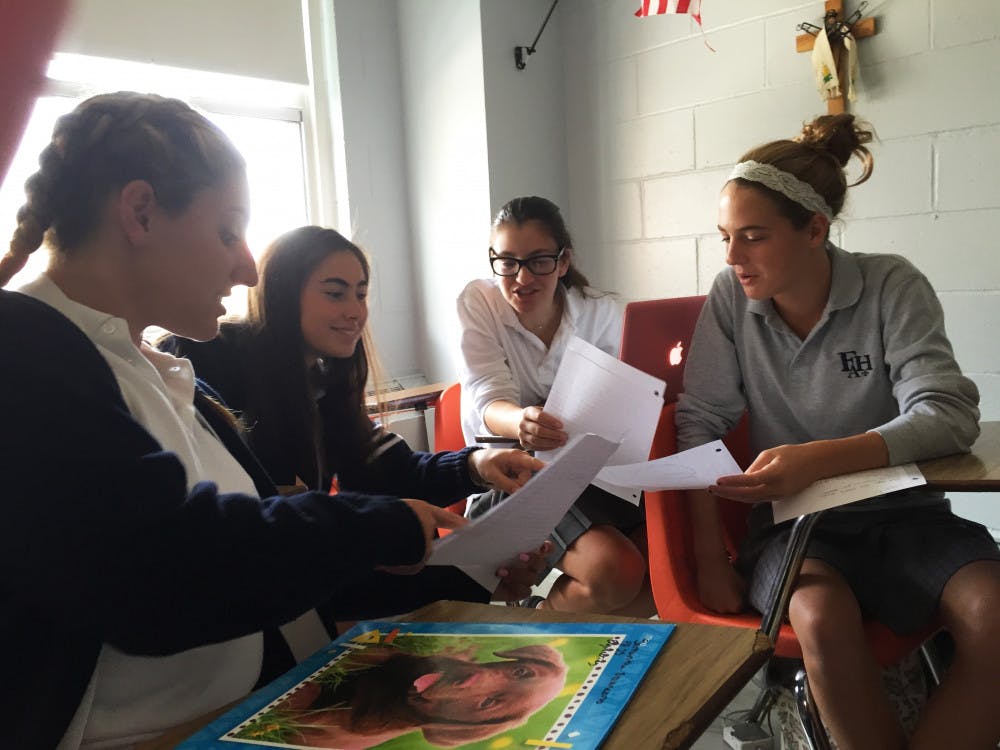The University has launched the Brown Pre-College Scholars Program in Engineering, a new program that allows students at a private, Catholic, all-girls school in Brooklyn, New York to take an online course led by a Brown professor during class time, said Ren Whitaker, director of online development for the School of Professional Studies.
Twenty-two students at Fontbonne Hall Academy have been learning about engineering design principles and collaborating on biomedical, materials science and renewable energy engineering projects through the online course, according to a joint press release.
Karen Haberstroh, director of STEM outreach and assistant professor of engineering, serves as the lead instructor of the online course. “The course is designed so that (Haberstroh) can interact with the students asynchronously on a regular basis,” Whitaker said, adding that Haberstroh also “connects via video conference to help them better understand the coursework and to get to know the students.”
Outside of class, the students work in groups to develop their own engineering projects, said Adam Segall, STEM specialty programs coordinator at Fontbonne. The students finished building prototypes for wheelchairs last week, he said.
Haberstroh and co-facilitator Indrek Külaots, a lecturer in engineering, have worked closely with instructional designers from the School of Professional Studies and Fontbonne teachers to design the course, which “knits together” Brown’s four previously-existing online engineering courses, Whitaker said.
“The feedback from the students has been 100 percent positive,” Segall said. “Working their way through the engineering process has really opened their eyes to engineering as a possible career choice.”
Maryann DeLuca, college bridge director at Fontbonne, wrote in an email to The Herald that she reached out to Whitaker last September to propose the course, as Fontbonne prioritized STEM but did not have an existing engineering program. “I chose Brown University because of its commitment to diversity and sustained outreach to women and minorities,” DeLuca wrote. “Brown was the one and only university I initiated conversations with.”
“The timing was exquisite because we had been thinking about how we might be able to connect with high schools not only in the U.S., but also abroad,” Whitaker said. “It was a gift when they reached out because we could conduct this pilot on a very small and intimate scale to make sure we did it really well.”
James Chansky, director of summer session and pre-college programs, said the proposal fit in with the School of Professional Studies’ mission of “bringing the capabilities for teaching that we have to high school students.”
Fontbonne Principal Mary Ann Spicijaric said she anticipates an increase in students’ interest in Brown as a result of the program. The class will visit the University in November as part of the partnership, she said.
Four program participants will also receive scholarships to attend Summer@Brown this summer, Spicijaric said. Though the process for awarding the scholarships has not been discussed, the criteria will likely involve “performance and financial need,” she said.
While the pilot was established as a “one-year experience,” students would likely be “disappointed if there’s nothing that follows it,” Spicijaric said, adding, “What we are doing with Brown is so different, so unique, so novel — it’s a fantastic addition to what we already have here.”
“We will see how the Fontbonne model works and take what we learn,” Chansky said. “If we learn this is incredibly successful and that there are other schools that are eager to connect with us in this way, then presumably we would move in that direction.”
The partnership was not developed solely to engage girls in STEM, but the fact that Fontbonne is an all-girls’ school “does make it special,” Whitaker said, adding that future programs would seek to engage other underrepresented groups.
Chansky and Whitaker both emphasized that the program is still in the first few weeks of its first iteration, and the future of the program remains to be shaped.
“I know that whatever we do (in the future) needs to be based on a careful assessment of outcomes,” Chansky said. “We still need to figure out the extent to which they’re learning, and how deep that learning is.”





